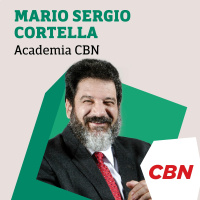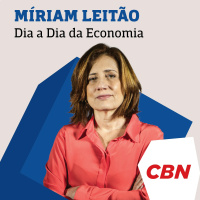Sinopsis
This show targets an audience interested in archaeology. It explores myths surrounding this exotic, often misunderstood field and acquaints listeners with the contemporary practice of unearthing the human past. Themes range from Dr. Schuldenrein’s own “Indiana Jones”-like adventures in the land of the Bible to his team’s archaeological forensics effort to unearth Kurdish mass graves in Iraq. That undertaking helped convict Saddam Hussein in 2006. Topical issues contribute to the evolution vs. creationism controversy based on updated fossil records and innovative DNA studies. An episode highlights the main funding source for archaeology in the U.S. (Hint: the oil and gas industry). Experts reveal the latest high-tech approaches to buried archaeological landscapes that provide clues to understanding climate change, past, present and future. Indiana Jones: Myth, Reality and 21st Century Archaeology is broadcast live every Wednesday at 3 PM Pacific Time on the VoiceAmerica Variety Channel
Episodios
-
Protecting our Past: Archaeological Heritage Management across the World
11/09/2013 Duración: 54minIn our last episode we looked at the antiquities trade and the destruction of cultural property through the trade of artifacts. This week we continue with a similar theme and look at the dangers to the archaeological sites themselves. Do you like to travel? Do you visit World Heritage and other archaeological sites while travelling? As archaeologists, we like to visit these important pieces of history while abroad. However, we are not the only ones, and with the rise of cultural tourism, an unintended consequence is that many of these sites are becoming irreparably damaged. Which sites are especially at risk? How can we protect these sites? With close to 1000 World Heritage sites, this can be an especially difficult task. Join us as we interview an expert on the subject, Dr. Douglas Comer, currently Co-President of the ICOMOS International Scientific Committee on Archaeological Heritage Management.
-
Cash for Artifacts: The State of the Illegal Antiquities Trade
28/08/2013 Duración: 55minIf you’ve ever been to a museum with artifacts on display, chances are that you’ve seen the product of the illicit antiquities trade. Unfortunately, this practice is more widespread than one might believe, especially in politically and economically unstable regions. Archaeological sites are destroyed as looters search for artifacts that they then sell for a profit. Why does the connection between the antiquities trade and instability in general exist? What are the consequences of the illicit antiquities trade? Join us and guest Dr. Sam Hardy, research associate at the University College London Institute of Archaeology, as we discuss this global issue.
-
Archaeology in the Digital Age: Virtual Curation and 3D Archaeology
21/08/2013 Duración: 56min21st century archaeology is all about making use of the latest technology in order to access and analyze sites and artifacts in new and unique ways. Although archaeologists may be focused on learning from the past, they are constantly developing new ways to do so using today’s newest technological innovations. Examples of this include using Geographic Information Systems (GIS) to map sites in three dimensions, remote sensing underground to discover new sites, and as we will discuss in this segment, 3D scanning of artifacts. Digital curation involves a scanner that uses lasers to create a 3D model of artifacts in order to make them available to researchers, educators, and students across the country. Join us and special guest Dr. Bernard Means, director of the Virtual Curation Laboratory at Virginia Commonwealth University, as we discuss digital curation, 3D archaeology, and the use of technology in archaeology.
-
“Indy’s Home”: Near Eastern Archaeology and the Oriental Institute
07/08/2013 Duración: 55minThis episode goes right to the heart of the show’s beginnings with the emergence of the mythical figure of Indiana Jones and his character’s connections to the Oriental Institute (OI) at the University of Chicago. Today’s program begins with a discussion of the Indiana Jones character, his connections to the OI and the impacts of the world’s most famous archaeologist. The Oriental Institute is probably the most venerated research institute for Near Eastern archaeology. Both a museum and research facility, the OI was founded in 1919 and focuses on the ancient Near East, which includes modern day Egypt, Israel, Syria, Turkey, Iraq, and Iran. In recent years the OI has modernized its exhibits, established major public outreach programs both to the profession and the local (Chicago) community while expanding its research venues across the greater Near East. Join our special guest, Dr. Jack Green, chief curator at the Oriental Institute, as we discuss Indiana Jones, the Oriental Institute, and the intersection of
-
“Miller Time in Ancient Mesopotamia”: The origins of beer brewing in the Cradle of Civilization
31/07/2013 Duración: 56minMesopotamia, known as the cradle of civilization, has long been the focus of archaeologists studying the origins of domestication and farming. The latest in food based studies in this area (contemporary southern Iraq), centers on a unique project that merges some of the earliest Bronze Age texts with advanced geochemical techniques and residue studies to examine the origins of beer brewing. The project was initiated by several graduate students at the University of Chicago’s Oriental Institute, together with the owner of the Great Lakes Brewing Company in Cleveland. While this study is sure to capture the attention of the beer drinking public, it also has ramifications bearing on patterned changes in food and drink production, consumption, and distribution through time. Our special guest is PhD student Tate Paulette, one of the chief architects of this study who offers a unique perspective on the evolution of a key recreational libation that is much older than many of us ever imagined.
-
“Doing the Locomotion”: Human Evolution and the Transition to Bipedalism (Walking)
24/07/2013 Duración: 57minPerhaps no sub-field in Anthropology has witnessed more dramatic advances that the study of human origins. From the astounding discoveries in the area of mitochondrial DNA to the accelerated pace of hominid finds, the interpretive potential of the hominid fossil record is expanding exponentially. Researchers continue to revise the chronology and complexity of the human origins puzzle. We can track our ancestry to such early forms as the 2 million year old Australopithecus sediba, which is not quite human, yet shares some significant characteristics. This key fossil has drawn the attention of physical anthropologists since its discovery in South Africa in 2008. What can we learn from this enigmatic fossil? How does it and other recent discoveries contribute to what we know about bipedalism? Join us with this week’s featured guest, paleoanthropologist Dr. Jeremy DeSilva, as we discuss recent advances in reconstructing the locomotion of early apes and the pathway to bi-pedalism.
-
Special Encore Presentation: Indiana Jones.....Myth's, Realities and 21st Century Archaeology 07.03.13
17/07/2013 Duración: 47minSpecial Encore Presentation: Indiana Jones.....Myth's, Realities and 21st Century Archaeology 07.03.13
-
“They Left it All Out in the Field”: The Contemporary State of Battlefield Archaeology
10/07/2013 Duración: 43minConflict Archaeology or the Archaeology of Battlefields is a sub-discipline that has risen to the forefront since the 1980s. Despite a growing national fascination with wartime chronicles and military strategies the archaeology of the actual sites of conflicts remains fairly unknown to the public. What can we learn from site excavations that are not documented by written accounts and broadly researched academic studies? What types of material remains are characteristic of battlefield sites and do they inform on events in ways that research and eyewitness accounts cannot? This week's guest, Dr. Douglas Scott, a renowned expert in the field, whose work on the Little Big Horn (“Custer’s Last Stand”) revolutionized formerly accepted interpretations of that dark chapter in American history. Dr. Scott explains how archaeological method and theory can be applied to battlefield excavation sites and considers how we can apply archaeological perspectives to modern and current world conflicts.
-
Thomas Jefferson, Native Americans, and the Birth of Modern Archaeology
03/07/2013 Duración: 47minHappy Independence Day! Join Dr Schuldenrein and professor Dr. Jeff Hantman as they discuss the American colonial period, paying particular attention to Thomas Jefferson. In 1783, while the Rev War was raging and he was serving as Virginia’s Governor, Jefferson lead the first scientific archaeological excavation in the United States, digging a Monacan native mound in Monticello. Jefferson held a complicated and often contradictory view of native peoples, at once extolling their virtues in an effort to counteract derogatory views of America held by many Europeans, while also advocating for Native assimilation into white-American culture and society. While much has changed, archaeology’s continuing failure to integrate Native histories and worldviews into established understandings of the past has lead Dr. Hantman to employ a collaborative archaeology. Listen in and learn how and why the history of the Monacan people is important to early colonial history and the Jamestown colony.
-
Assessments of Graduate Training in Archaeology: A Student Perspective
19/06/2013 Duración: 55minPrevious programs have explored the changing realities of graduate student training in the age of applied archaeology. Our surveys and interviews concentrated on professors and principals in the applied and academic worlds. This week we take the pulse of active graduate students. What are their thoughts on training programs, the training they receive in graduate school and the pathways they see themselves following as they pursue career tracks? Do contemporary graduate programs satisfy their projected career goals? How do they project their career choices and what are their visions of a future in archaeology? Our guests are Erin Baxter, PhD student from the University of Colorado, Esteban Fernandez, a recent M.A. graduate at the University of Colorado and Kyle Bocinsky, PhD student at Washington State University and a National Science Foundation Graduate Research Fellow.
-
Special Encore Presentation: The Growth, and Influence of the Oil and Gas Industry on Contemporary Archaeology
05/06/2013 Duración: 54minThe progressive decline in funding has reached epidemic proportions in North American archaeology. However, this decline is almost inversely proportional to the expanded role of applied archaeology and the concomitant acceleration of private sector influence. One of the most striking trends in this regard is the recognition that “scientific archaeology” goes hand in hand with cost-efficient management of cultural resources. The largest budgets and advanced research technologies in today’s archaeology are furnished by pipeline construction. Collaborative efforts between oil and gas engineers and Cultural Resource Management (CRM) professionals has resulted in quantum leaps in the discovery and understanding of the archaeological record. In today’s episode prominent consulting archaeologist Dr. Chris Bergman, a veteran private-sector consultant, evaluates the pivotal roles that pipeline distribution roles are playing to enhance our understanding of North American history and prehistory.
-
The State of Mexican Archaeology in 2013
22/05/2013 Duración: 59minIn our series on ancient civilizations we have highlighted the sophisticated methodologies and novel discoveries emerging in the Mesoamerican heartland. Significantly, major discoveries and interpretive perspectives are generated by native-born Mexican archaeologists. However, the infrastructure of Mexican archaeology is slow to adapt to the changing platforms of archaeological research and exploration in the developing world. Additionally, political turmoil, associated with the ongoing drug-wars, has placed a serious damper on the ability of Mexicans to design survey and excavation programs in certain parts of the country. Today’s interview with Dr. Sandra Lopez Varela, previews the more progressive thinking currently emerging in Mexico’s archaeological community. She discusses the potential for CRM to gain a foothold in the country as the Mexican government faces the challenges brought on by the needs to balance heritage preservation with economic development and national security.
-
Missions of Major Archaeological Organizations: the Society for American Archaeology (SAA)
15/05/2013 Duración: 58minThe Society for American Archaeology (SAA) remains the largest and most influential archaeological organization in the United States, with a membership in excess of 6000 that embraces academic, applied, and avocational archaeologists. The SAA was founded in 1934 to foster the understanding of the past by highlighting contemporary archaeological methods and theories. Since the 1970’s, as commercial archaeology’s profile grew, the organization has placed a strong emphasis on professional education, outreach and the involvement of indigenous groups. Over the past 20 years, the SAA has made its voice known in the political sphere by lobbying for stronger enforcement of preservation laws, establishing platforms on ethics and enforcement of anti-looting legislation. Today’s program is devoted to the past, present and future directions of the SAA with an interview of the organization’s newly appointed President, Dr. Jeff Altschul, and its long-standing Executive Director, Ms. Tobi Brimsek.
-
Reconfiguring Archaeology in the Age of Sustainability
08/05/2013 Duración: 56minTwo trends in contemporary archaeology will forever change the direction of the field. First, the reduction in pure research funding is forcing the profession out of the academy and into the domain cultural heritage management. Second, development and expansion projects are reducing the pristine landscapes that have been the focus of traditional survey and excavation. We no longer work where we want but apply our skills to where development occurs. What happens when our professional interests run counter to the timelines and financial constraints imposed by developers? Are we witnessing a move towards methodological advancement at the expense of growth and creativity in archaeological theory? Is this a bad development and does it even matter? Can we, or must we, find common ground with development interests? Public relations will assume greater influence as development interests and the heritage preservation ethic form a symbiotic dynamic whose ultimate resolution remains uncertain.
-
Ethical and Moral Dilemmas in 21st Century Archaeology
24/04/2013 Duración: 56minApplied archaeology in the past two decades has placed archaeologists in real-world situations. Formerly, the primary ethical issues confronting the field involved looting, repatriation of artifacts, and irregularities in the antiquities trade. However, there are new ethical dilemmas that have arisen, a still emerging preservation ethic, heritage management programs, and controversial military conflicts that endanger archaeological resources. Should we proceed working for developers and corporations whose economic aims may conflict with regulatory protocols? Should archaeologists cooperate with military and protect heritage sites in war zones around the world? Can we advocate for the resource while fulfilling contracts and commitments to clients? This week we discuss these and other questions with our guests, Dr. Peter Stone, Professor of Heritage Studies at Newcastle University and Dru McGill, a PhD candidate at Indiana University and Board Member of the World Archaeological Congress.
-
Rethinking Inca Archaeology: Contemporary Perspectives
17/04/2013 Duración: 56minThe Inca presided over the largest empire in the Western hemisphere in pre-Columbian era. Ever since Hiram Bingham brought Machu Picchu (the most famous of all Inca sites) to the spotlight about a century ago, our fascination with this expansive indigenous culture has grown exponentially. Advances in archaeological methodologies over the past decade are casting new light on the settlement systems and social and economic organization of the Inca Empire. Researchers are unraveling the nature of complex infra-structures and unique administrative and organizational hierarchies. Our guest this week, Dr. Terry D'Altroy, of Columbia University is one of the most innovate thinkers in the field and he provides an account of the latest developments in Inca research. Dr. D’Altroy’s most recent work extends into the realm of Inca cosmology and metaphysics and he explores the unique Inca concepts of time and space based on newly integrated archaeological finds and interpretations.
-
“So You Want to be an Archaeologist?” The Reality of Archaeological Training and Practice
03/04/2013 Duración: 58minInformal surveys of archaeological professionals shows that they ultimately chose this profession because their fascination with the past was so overwhelming that it superseded nearly all other aspirations. It is almost a calling, in many cases. However, the road to success is fraught with pitfalls and challenges. The educational trajectory is very steep and the apprenticeship even more daunting. Pay is neither commensurate with education, experience, and even professional achievement. In this program the host provides tips on training and vocational options, which are considerably lower-profile than media images project. However, most professionals will readily cede that the trip was completely worth the effort. Whether you are a student, or an inquisitive supporter of the discipline, this program will help you understand the varied aspects of the field beginning with education, and extending through vocational options and fulfillment of a productive and gratifying professional life.
-
“Bring me the body of Richard III”: When Reality Meets Myth in Archaeology
27/03/2013 Duración: 54minArchaeologists often confront the paradox of reconciling seminal events and larger than life figures with facts on the ground. Where is Noah’s Ark? Where are Jesus’ bones? Previous episodes have addressed specific cases in rigorous detail, but often with results tinged with variable measures of uncertainty. Yet, every so often spectacular finds can be readily tied to dramatic historic events. Today’s episode is a case in point. A team of British archaeologists from the University of Leicester Archaeological Services discovered the body of King Richard III. Armed with accurate historical documentation, and state of the art testing methodologies, the team confirmed that the body located within the church choir of a Franciscan friary was in all likelihood that of Richard III. That probability was confirmed by DNA testing. Our guest this week, Richard Buckley, Project Manager of the Greyfriars project, recounts the details of this remarkable discovery and its implications for archaeology.
-
Who Were the Aztec: Bridging the Gap between Myth and Reality
20/03/2013 Duración: 56minIn a world of sensationalist headlines the Aztec would appear to be the ultimate players. But what do we really know and how do we reconcile contradictory trends and traditions? The archaeological record has provided compelling evidence for human sacrifice and brutal warfare in the interests of conquest and expansion. By the same token, magnificent city-states with pyramids, monumental architecture, and complex trading networks bespeak infrastructures that may be the precursors of contemporary administrative structures. But despite their unchallenged dominance in the region, they fell under the pressure of the Spanish conquistadors who directly accounted for the Aztec collapse. How carefully can archaeology sort out fiction from reality in the Aztec legacy? Our special guest this week is Dr. Michael Smith, a leading expert on Aztec archaeology. Dr. Smith adds his unique insights to these and other questions that may help explain the developmental trajectory of an early complex society.
-
Stonehenge Redux: Towards a New Perspective on a World Monument
13/03/2013 Duración: 54minStonehenge remains a source of endless fascination for archaeologists and the general public. The most compelling interpretations have been a maze of fact and, more commonly, speculation and intrigue. The astronomical aspects of the site are typically cited in elaborate explanations of the advanced achievements of the unique Neolithic populations that descended upon the Salisbury Plain after 3000 B.C. Recent advances in research suggest that the site’s surface manifestation, the Megaliths, represent a more evolutionary pathway that follows its function as a ceremonial burial ground, and earlier, as a habitation site. Today’s guest, Dr. Mike Parker Pearson, is the Principal Investigator of Stonehenge Riverside Project. Our interview explores how our concepts of Stonehenge have evolved in response to changing theories of cultural evolution and how the recently exposed material cultural record reflects an increased understanding of Neolithic adaptations to landscape and geography.














